10 grim border walls dividing the world
By Pictolic https://pictolic.com/article/10-grim-border-walls-dividing-the-world.htmlA mock-up of the "Wall" (the border on the West Bank of the Jordan River) was presented in London, and the public was asked to write messages and make graffiti on the mock-up as on a real barrier. This problem is considered unique to Palestine.

But currently there are more than 50 border barriers around the world, for example in Korea, Saudi Arabia (which is almost completely enclosed by a wall) and just a few kilometers from the layout of the "Wall", in the Eurotunnel between the UK and France. And there seem to be more and more walls in the world.
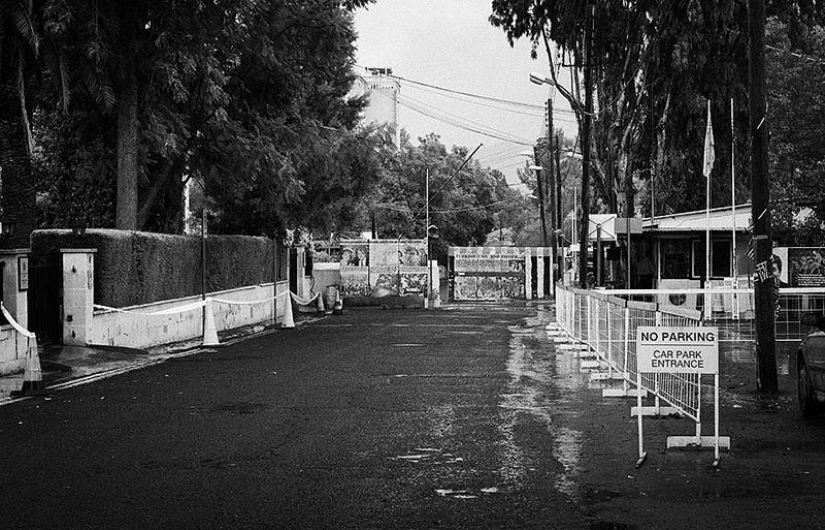
In July 1974, the Turkish military used the failed Greek Cypriot coup as a pretext for deploying a peacekeeping operation, capturing approximately 8% of the territory of Cyprus. After that, Turkish troops advanced to the ceasefire line established in 1964 and captured another 37% of the island, turning the green line into a separation barrier in 1984.
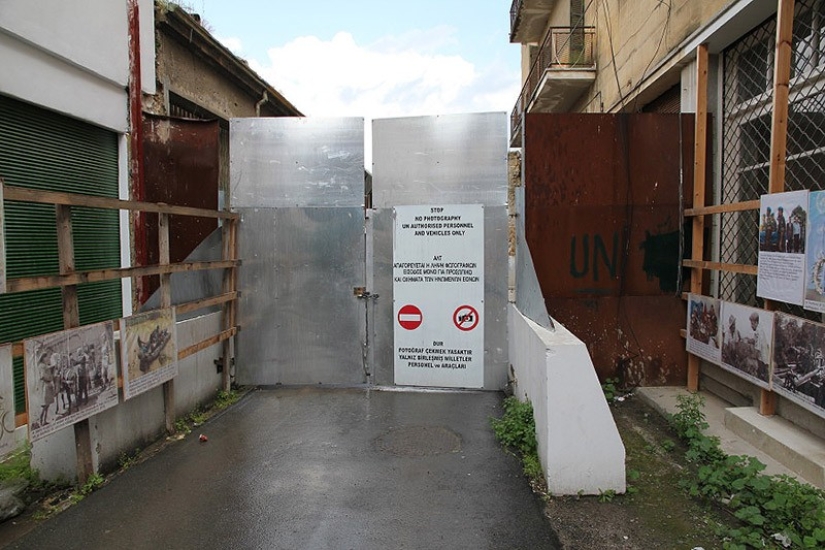
The barrier cut Cyprus into two parts, separating the Greek Republic of Cyprus from the Turkish Republic of Northern Cyprus proclaimed by the Turks, which is not recognized and condemned by all UN member states except Turkey. Since there was no ethnic division in Cyprus before the coup, it led to a large-scale resettlement of the population. 200,000 Greek Cypriots were expelled from the northern (Turkish) part of the island, and 60,000 Turkish Cypriots were expelled from the south.
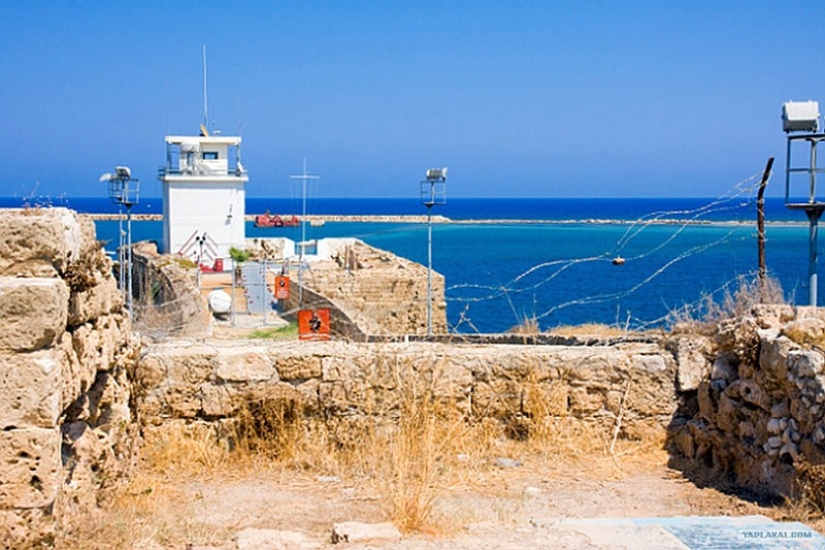
The barrier includes a buffer zone fenced with barbed wire, watchtowers, anti-tank ditches, minefields and concrete wall segments.
The situation is heating up on both sides. As the owner of the store told the New York Times in 1989: "Here we, the Greeks, are Orthodox Christians, they are Muslims. The Green Line was built because communities hate each other."
Nevertheless, the situation has improved somewhat. After 30 years of the policy of not crossing the border, there are now several passages in it, the first of which was created in 2003, when the president of the TRNC punched a hole in the wall on Holy Wednesday. Hundreds of people lined up in the corridor of Ledra Palace to see their families for the first time in many years.
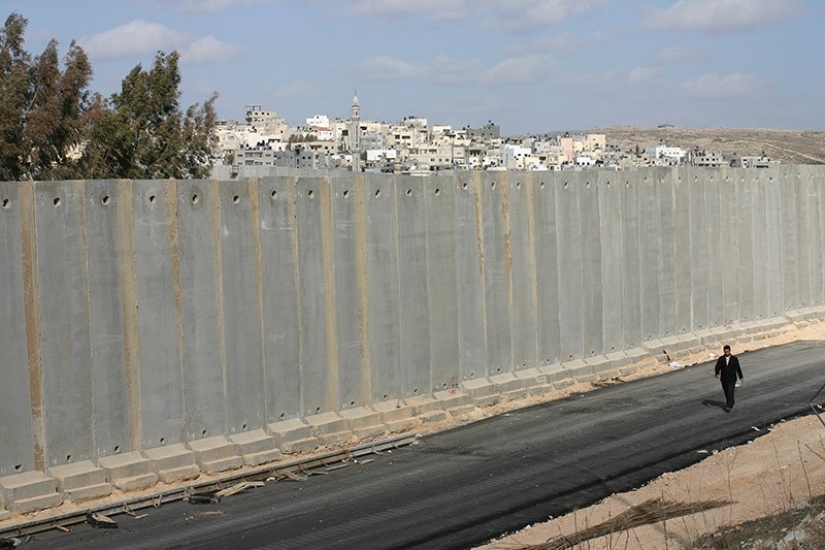
In 2009, Egypt began building a barrier along its border with the Gaza Strip to stop the flow of contraband, weapons, explosives and militants.
After completion, the length of the wall will be 9-11 km. Unlike the existing exterior wall, the new one will be made of steel and go underground for 18 meters. Its segments are equipped with sensors and hoses to flood the tunnels with seawater if necessary. The original structure was 9.6 km long, and Palestinian sources reported that tunnels almost 30 meters deep collapsed almost daily.
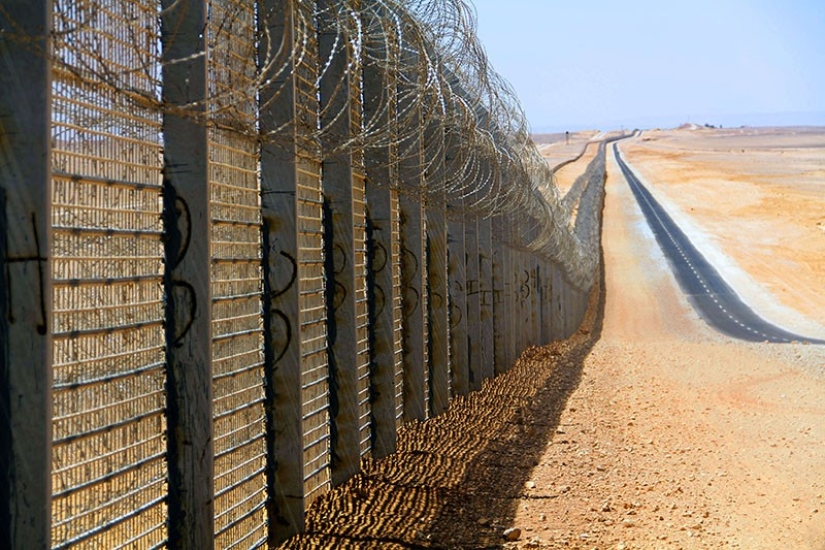
Hamas calls this barrier the "wall of death" because it is afraid that it will be used to strengthen the blockade, and calls on Egypt to put an end to this. For a terrorist group that receives weapons and construction materials for the construction of new tunnels, which has to pay operators $ 2,500 a year for the use of tunnels, this is not surprising.
It was not long before the barrier was partially destroyed and construction was suspended. It was restarted several times. The international community is also hindering the construction of the wall: after an Egyptian security guard was killed in 2010, both peaceful and violent protests broke out. In Jordan, in the same year, a fatwa (a religious injunction among Muslims) was issued against the wall.
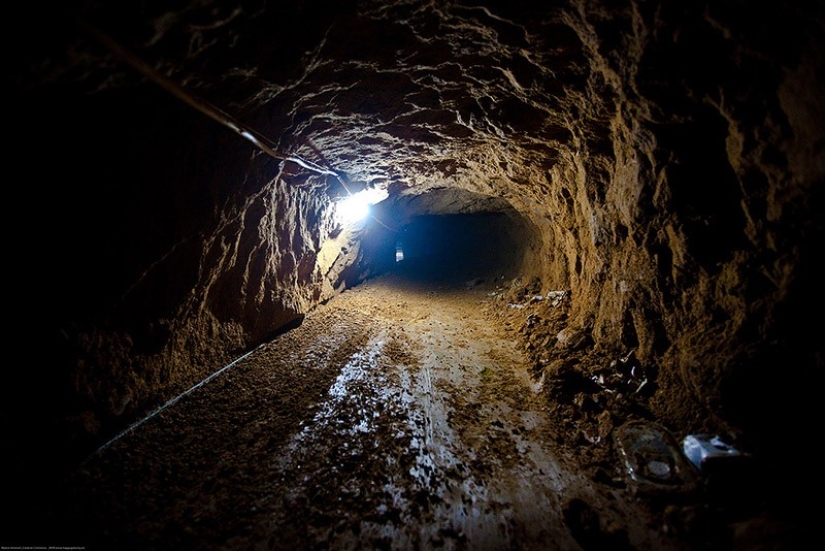
Critics claim that the tunnels serve as a lifeline for the Gaza Strip, because not only weapons, but also food and medicines are being smuggled through them. In the past, Egypt turned a blind eye to these tunnels, but a series of terrorist attacks forced it to take action.
The smuggling tunnels are used by Hamas, other terrorist and extremist groups and a well-armed, wealthy criminal class that has emerged in the Gaza Strip and in the The Sinai Peninsula. The Sinai city of El-Arish was the epicenter of these problems, and now Egypt is building another wall to completely surround it and leave only ten entry and exit points.
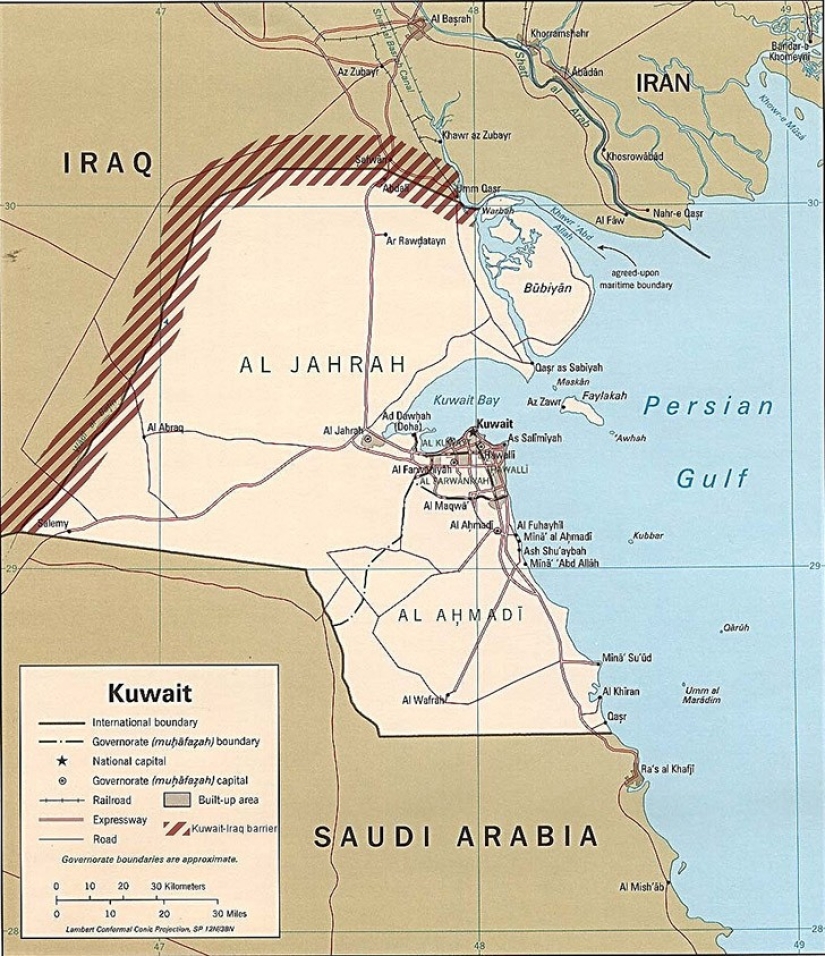
After Iraq's invasion of Kuwait in 1990 and the first World War In the Persian Gulf, under the leadership of the United States, the United Nations has created a demilitarized zone between peoples. In 1993, Kuwait began the construction of a 193-km border fence, the Kuwait—Iraq barricade, under the control of the UN Observer Mission.
The first version was a system of barriers and trenches with more than a million land mines. Many of these mines were converted and filled by Iraqi forces during the invasion in 1990. In 2004, Kuwait announced the construction of an additional iron barrier along the border.
In 2005, the Iraqis claimed that the barrier was destroying their property, and construction was suspended.
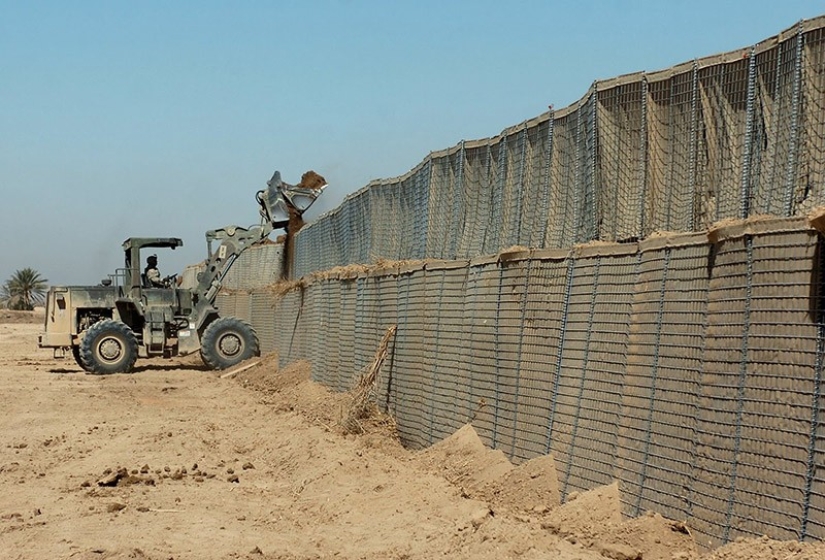
In the same year, significant controversy was caused by Kuwait's creation, on behalf of the United States, of passages in the places of the barrier marked by the US Marines, which were large enough for tanks to pass through them. The UN accused the US of violating UN mandates against military activities in the demilitarized zone, while the US, not caring about reprisals, said: "This is not a problem, because any war with Iraq is justified by its previous invasion of Kuwait and possible acts of aggression in the future." Of course, the US invaded Iraq just a few days later.
Iraq and Kuwait have been opposed to each other for a long time, while maintaining the appearance of cooperation, since the beginning of Kuwait's struggle for independence in 1963. Despite achieving independence, Saddam Hussein's regime considered Kuwait to be part of Iraq, and the creation of a barrier in the region was illegal. There are still many people in Iraq who think the same way, and given all the troubles the region is facing, it is very unlikely that the barrier will be destroyed.
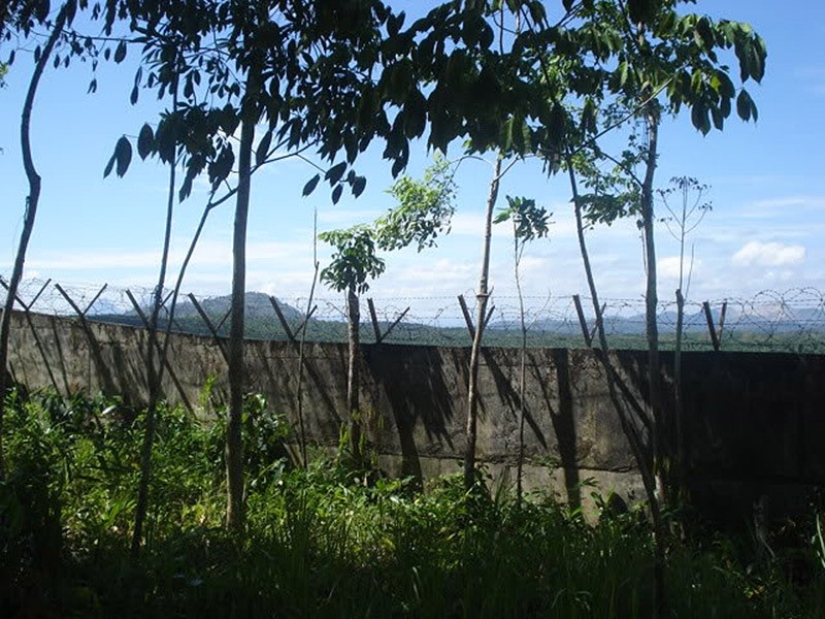
The border of Malaysia and Thailand stretches for 505 km from the Strait of Malacca to the Gulf of Thailand. This fenced area between the then Malay states under the protectorate of Great Britain and the Thai Kingdom was created by the 1909 Border Treaty. Today, the border is controlled by Thailand and modern Malaysia.
In 1965, the countries organized a joint Regional Border Committee overseeing security along the border. It was created, in particular, in response to the communist uprisings.
In 1991, Malaysia announced that it was going to build a 96 km long concrete wall to separate the Malaysian state of Kelantan from Thailand. Although the official purpose of the construction was to curb criminal activity along the border, analysts noted that relations between the countries were strained due to disputes over territory, fishing rights and due to Islamic separatist movements. Malaysia always denies political instability in relations with Thailand and avoids mentioning violence in every possible way.
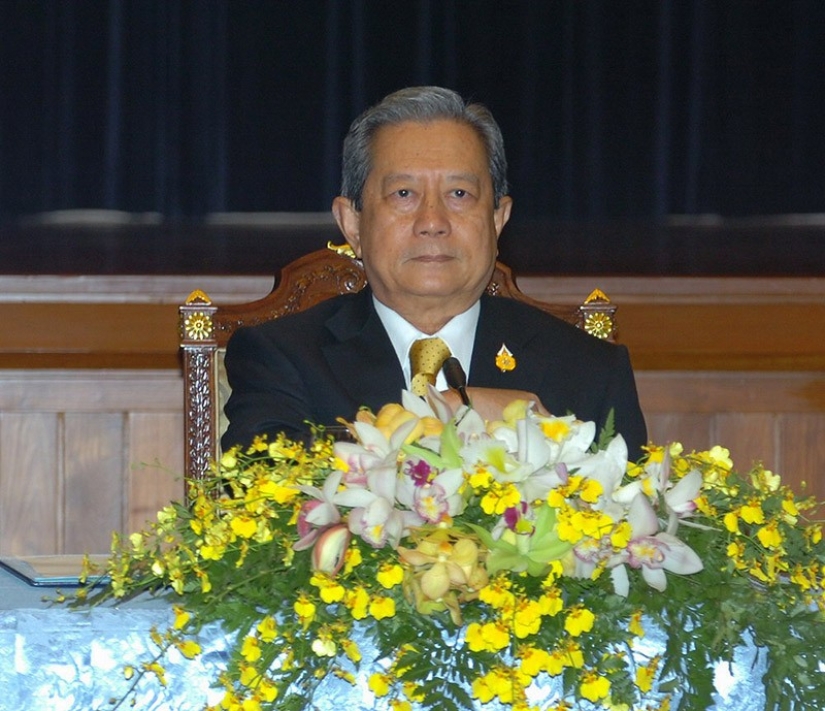
Nevertheless, in 2007, Thai Prime Minister Surayud Chulanont supported plans to build another barrier along part of the border, and in 2013 Malaysia announced that it was building another wall along the Sungai Golok River, which separates Kelantan from Narathiwat Province, with Thailand's approval. There are many Malaysians living along the river and there are many illegal berths. The current Minister of Internal Affairs of Malaysia, Dr. Ahmad Zahid Hamidi, said that these people will be resettled and the berths will be destroyed.
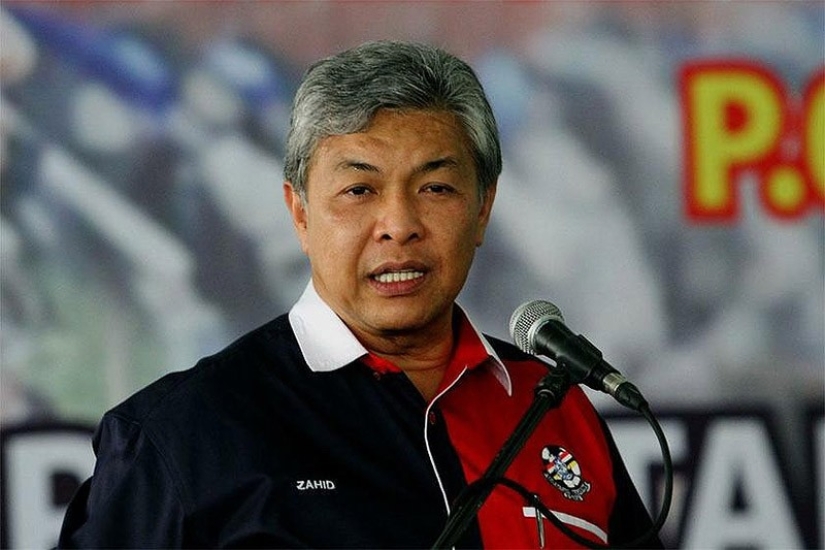
Only this year, amid calls from the United States to pay attention to the problem of human trafficking (both countries received the lowest ratings on this issue) and violence tearing the region apart — including a series of explosions in 2012-2013, it was decided to replace the original structures with modern fences with an improved security system.

From 1990, when Yemen achieved unification, to 2000, tensions between Saudi Arabia and Yemen were high, and fighting even broke out several times. In 2000, they established a fragile peace. However, in 2004, Saudi Arabia, one of the most active critics of Israel's construction of the barrier, began to build its own barrier from Yemen.
It is made of concrete-filled barriers stuffed with sensitive electronic equipment, becoming part of a larger $9 million video surveillance installation project. Saudi Arabia is trying to stop the smuggling of weapons, explosives, drugs (including kata, a plant popular in the Middle East that causes a mild narcotic effect) and people from Yemen, but it was an uphill struggle.
Construction began after 36 border guards were killed in the Saudi border town and after a series of terrorist attacks organized by radical Islamists in 2003, in which 50 people were killed and hundreds were injured.
Work on the barrier stopped in 2004, and officials from both sides went to negotiations to determine their fate. Yemen likened the barrier to the Israeli one and said it violated the treaty stating that no armed forces could be located closer than a 20-kilometer buffer zone along the barrier, and that it would violate the grazing rights of sheep herders.
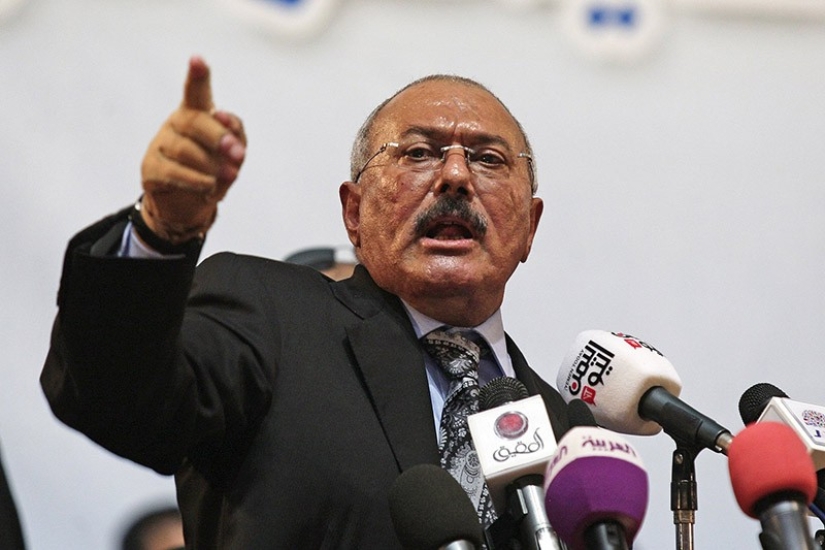
In 2008, construction was resumed, and by 2013, a 74-kilometer section of the barriers was completed to solve a new problem — a wave of illegal immigrants, mainly Somali, Ethiopian and Yemeni refugees, illegally crossing the border in search of work. Construction has started again to stop the flow of these migrants and the smuggling of weapons and drugs. After the overthrow of former Yemeni President Ali Abdullah Saleh, when militant Islamists, generating instability in the region, took control of part of Yemen, the problems with radical groups and hashish smuggling became worse than ever.
Saudi officials report that the new barrier installed by French contractors has brought great success in the fight against smugglers and saboteurs. After completion, the length of the barrier will be 1,799 km.
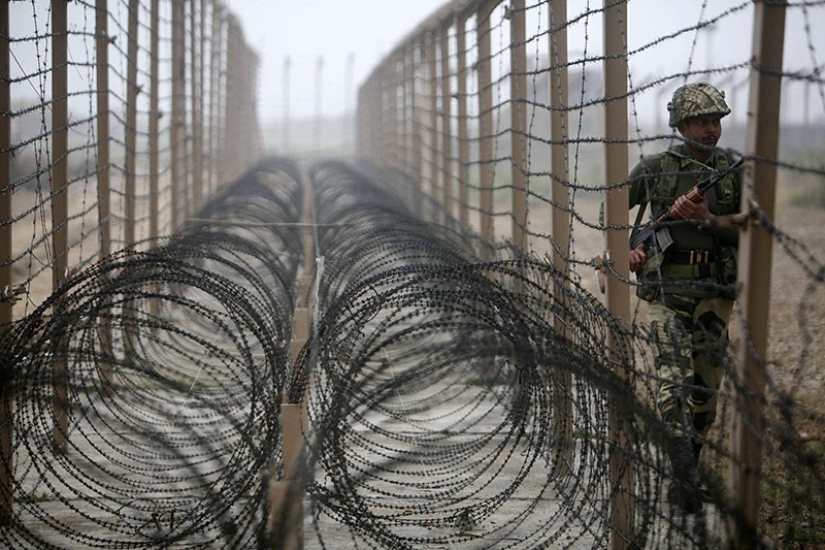
In 2004, India completed its 547-kilometer barrier, equipped with barbed wire, thermal imagers, night vision devices and sensors, on the actual border with Pakistan in Kashmir. Its goal is to prevent the penetration of separatist militants carrying out terrorist attacks on civilians and military facilities.
This is not new for India. After the failed but bloody separatist uprising in Punjab In 1980, India built a wall along the provinces of Punjab and Rajasthan. Now the entire border is fenced, and there is only one passage through it, and its illumination can be seen from space.
In 2014, the situation was promising, as trade ties were expanding, which could lead to cooperation between peoples, when both sides agreed to open a corridor in Wagons to ensure the free passage of trucks and containers for trade. Hope was dashed when, less than a week later, Indian police seized 100 kg of heroin hidden in a truck coming from Pakistan. In response, Pakistan has stopped cross-border movements across the border.
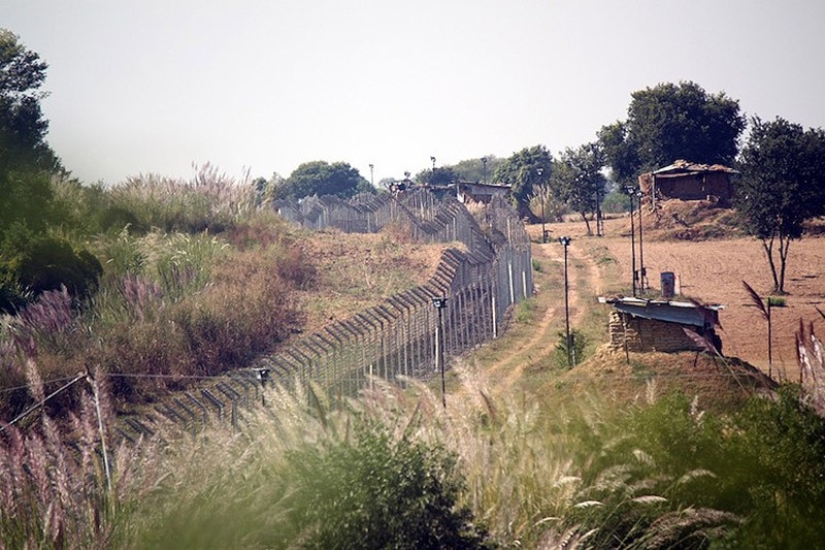
India is not alone in building a wall against Pakistan: one of the most fortified barriers in the world is between Pakistan and Iran. This is a three-meter wall almost a meter thick, stretching for 700 km across the scorching desert. It also has a number of ditches, trenches and other fortifications, its purpose is to stop illegal border crossings and the flow of drugs into Iran. Iran has one of the highest rates of opium addiction in the world, while most of the drug is produced in Afghanistan and is often exported and processed in Pakistan.
Analysts say that the real reason for the construction is the suppression of the rebellion of Baloch Sunni Muslims, which has been brewing for many years, and protection from a militant group called "Jundullah" ("Soldiers of Allah"), which began the struggle for Sunni Muslims against the Iranian Shiite regime. Since the wall is located between Baloch communities, critics call this separation barrier, which damages civilians and destroys the local economy, a "blatant attempt to divide the Baloch nation" on two sides of the barrier.
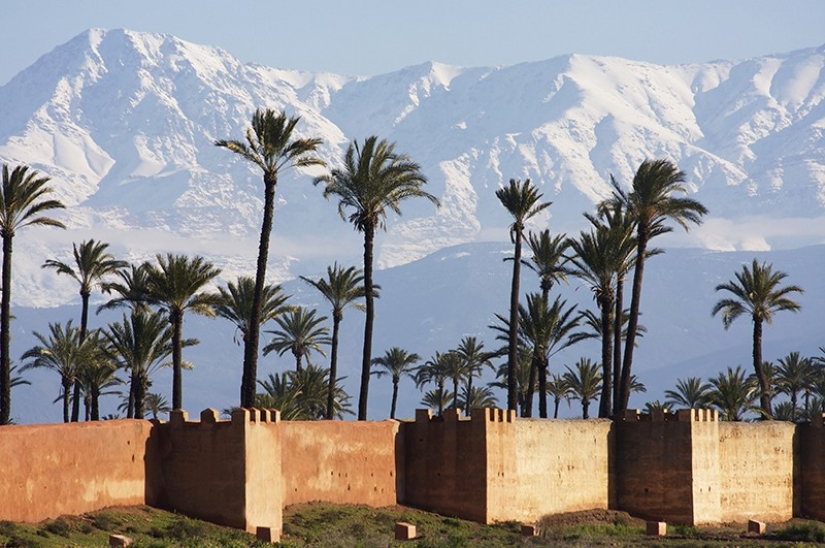
From above, it looks like a scratch in the sand, crossing the entire Sahara. The Moroccan Wall consists of 2,575 km of sand embankments, walls, fences, bunkers and minefields, it is almost half the size of the Great Wall of China and four times the size of the Israeli barrier. The construction of the Berm was started in 1980 by the Moroccan Royal Army as a barrier between the southern Moroccan provinces and territories controlled by the POLISARIO Front (Sahrawi National Liberation Movement) to prevent the return of Sahrawi refugees to their homeland. Between 1980 and 1987, five more walls were added.
After the 1991 armistice, both sides patrol the wall. The Moroccan forces number 160,000 soldiers and military installations installed every 11 km along the barrier, and the POLISARIO refuses to disclose its numbers.
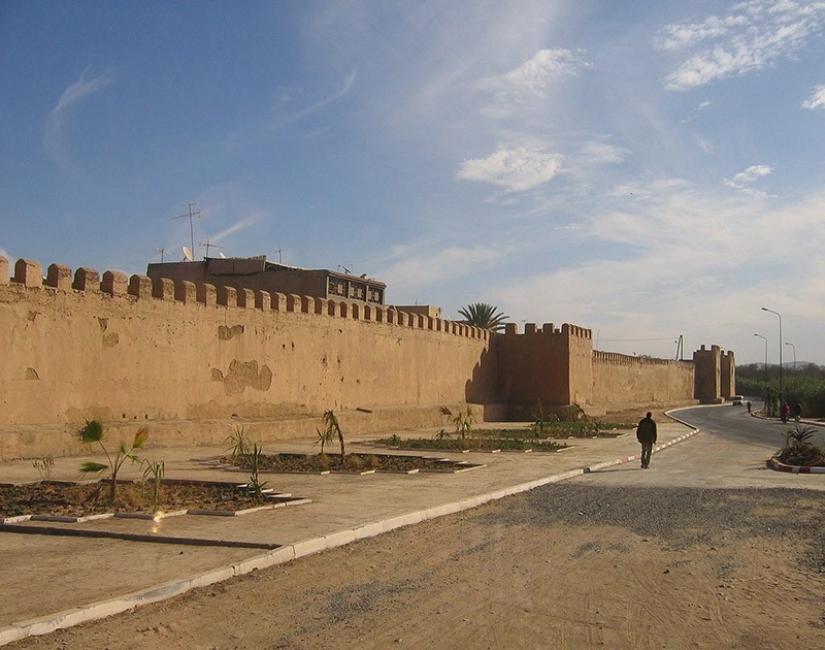
Critics call the barrier a "wall of shame" because it cuts off Sahrawi soldiers and refugees from their families in Algeria and harms Sahrawi nomads in the region. Although this barrier has not received as much publicity as the Israeli one, it has become the center of protests on behalf of the refugees of the Saharan camps. These movements attracted public attention when, in 2008, 19-year-old Ibrahim Hussein Leibeit lost his right leg below the knee, accidentally stepping on a mine.
The conflict in Western Sahara is one of the longest modern conflicts in the world, which began in 1976 when Spanish colonialists illegally divided the area between Morocco and Mauritania.
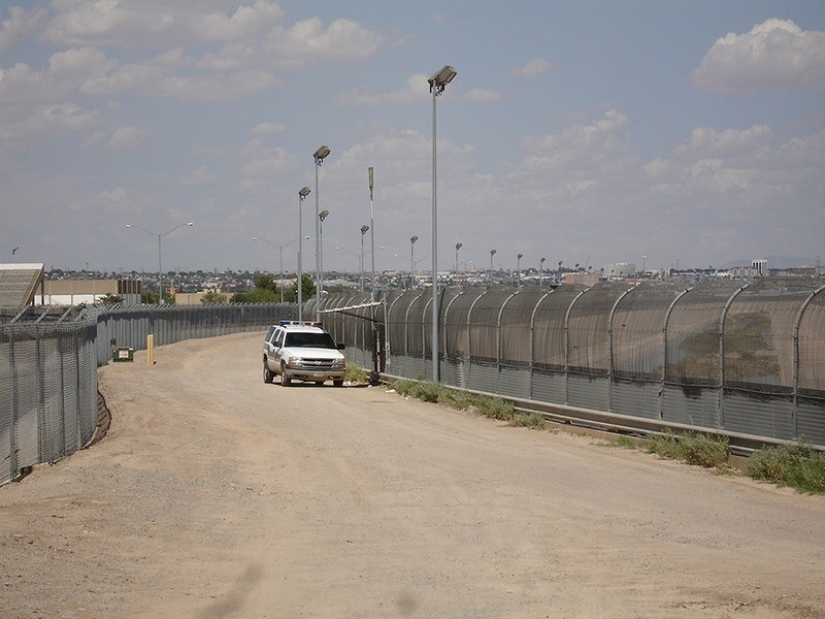
The US border and Mexico is a system of gradually constructed barriers and new sections erected after the Reliable Barrier Act of 2006. Barriers with pedestrian and transport barriers, controlled roads and lighting are complemented by a system of cameras, radars and sensors and are used to prevent illegal immigration from Mexico to the United States and the suppression of drug smuggling and flow.
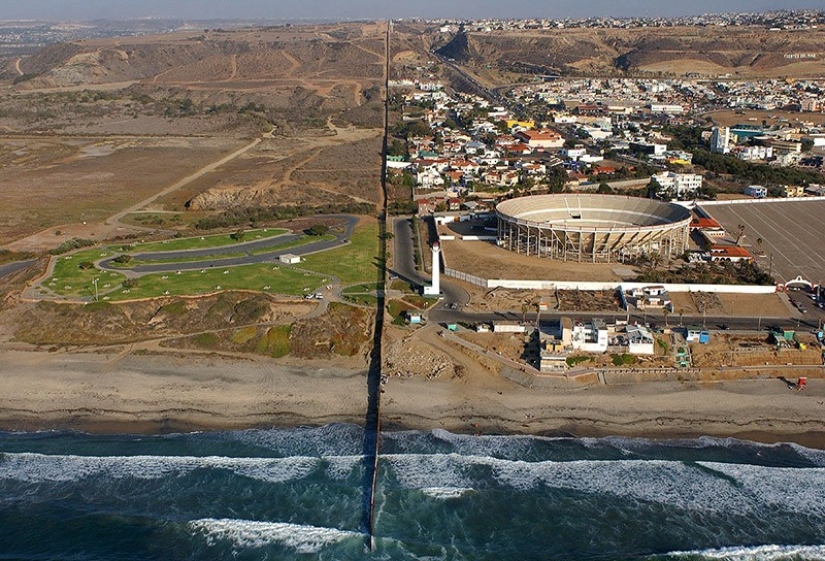
From the very beginning of construction in the United States, heated debates broke out. There were gaps in the barrier in some places, and many accused the government that the rich and politicians were protected from the destruction of their property by the barrier, while ordinary people were harmed. The costs fell on the shoulders of taxpayers, in addition, the fences were divided by Indian tribes living along the border.
Others complained that the wall is not enough to stop migration, and it only causes more deaths as people go to extreme lengths to cross it. The death rate soared almost instantly as immigrants tried to scale the Arizona border wall during the sometimes deadly summer months.

The barrier also caused serious environmental consequences, as the Ministry of National Security carried out construction bypassing many old laws on nature protection.
Nevertheless, the barrier has proven its usefulness in detaining illegal immigrants. For example, in 2007, only 150,000 people tried to cross the border, compared to 600,000 in the early 1990s.
Border guards have also discovered and destroyed more than 170 smuggling tunnels since 1990.
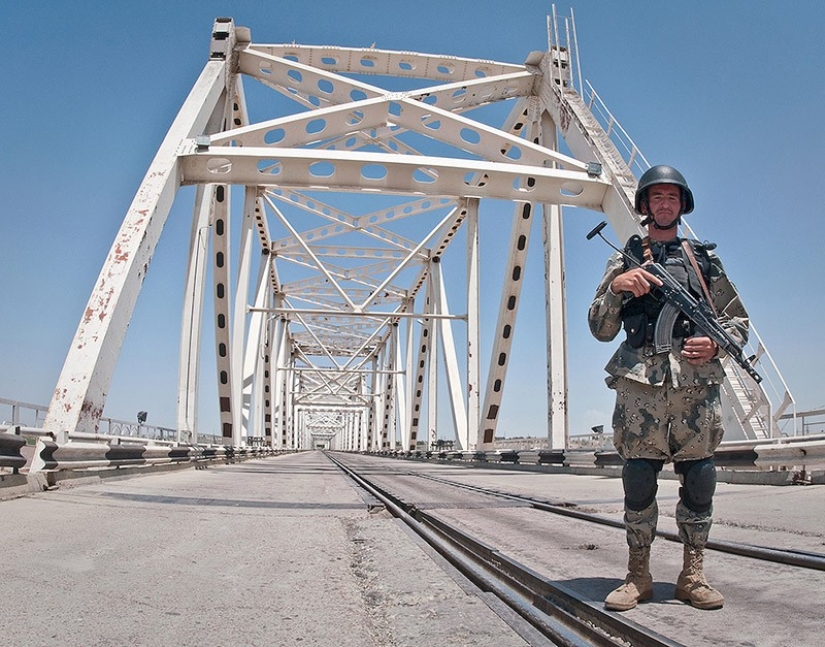
Uzbekistan is separated from Afghanistan by a barbed wire barrier with a second, higher level of electrified barbed wire, patrolled by armed guards and protected by mines. This is one of the most heavily guarded borders in the world, and it can only be crossed over one bridge. She attracted media attention in 2001, during the humanitarian aid crisis caused by the American war in Afghanistan.
Initially, the border was closed when the Taliban came to power in Afghanistan. A few days after the September 11 attacks, when the United States announced a military operation against the Taliban, Uzbekistan replaced all the old barriers on the border with Afghanistan from Turkmenistan to Tajikistan. The new barrier was twice as high as the old one, and electricity was installed on it to prevent illegal immigration and stop the attempts of refugees to enter Uzbekistan.
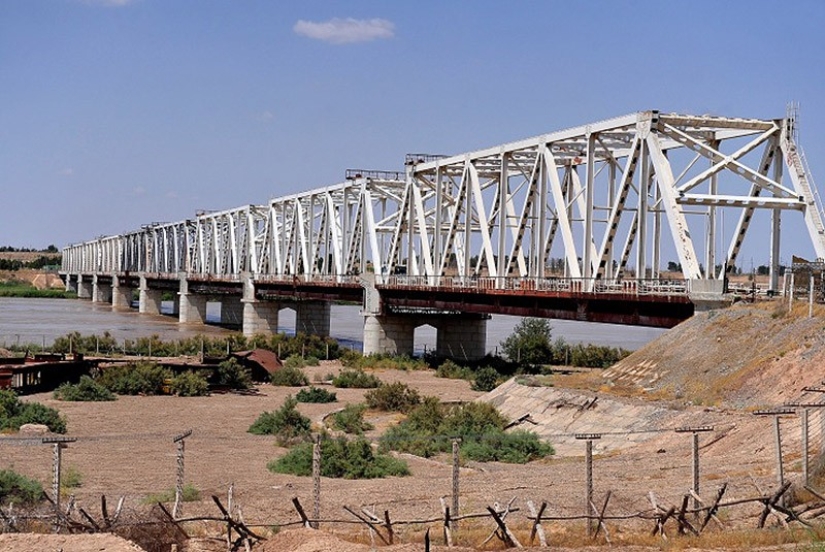
The lone bridge on the border was built by the Soviet Union to transport weapons and ammunition to Afghan territory. During the humanitarian crisis of the early 2000s, on December 9, 2001, for the first time since 1997, the 135-meter Friendship Bridge was opened amid a flurry of political maneuvers that eventually allowed humanitarian aid to enter war-ravaged Afghanistan just before mass famine could come.
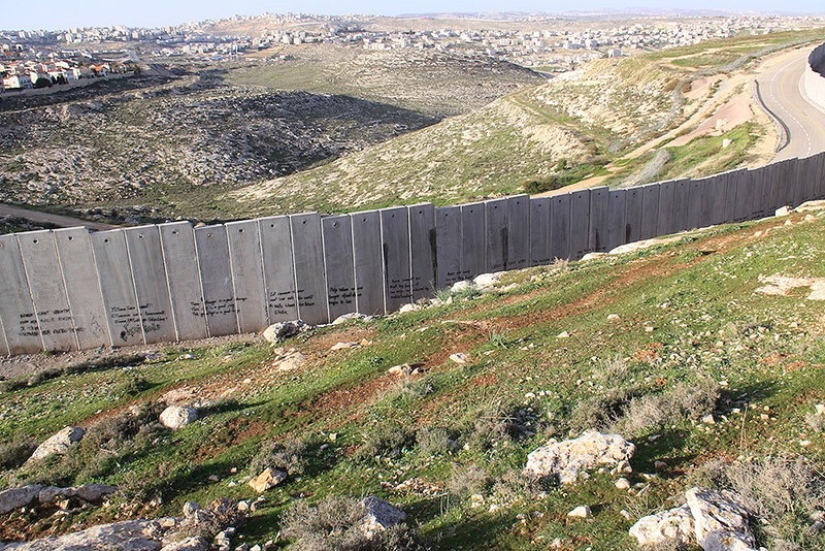
The barrier on the west bank currently stretches for 670 km and consists of a 5-meter concrete base and wire mesh, barbed wire and ditches, it is equipped with electronic sensors and other equipment. In some places, the barrier grows up to eight meters in height and is complemented by watchtowers. Construction began in 2002 to secure Jerusalem from attacks by Palestinian suicide bombers. How effective was the barrier?
According to the Israeli Ministry of Foreign Affairs, there were 220 deaths in 2002. The following year, when the first part of the barrier was completed, the number of deaths decreased by half, and a year later it became two times less. By 2007, only three deaths had occurred, and since 2010, there have been no deaths at all for two years.
In 2004, the International Court of Justice submitted to the UN a report compiled by an advisory committee appointed to investigate the legality of the barrier. It noted that the barrier was erected illegally.
Critics claim that the document is politically motivated and uses biased terms, while not mentioning Israeli reasons for the construction of the barrier, but emphasizing Palestinian complaints. They also point out that there is no legal basis for the barrier and that the conflict between the two peoples should be settled in bilateral negotiations within the region, and not by outsiders. Despite all this, the UN General Assembly voted 150 to six to condemn the wall and demanded its removal, with all 25 EU members voting against Israel.
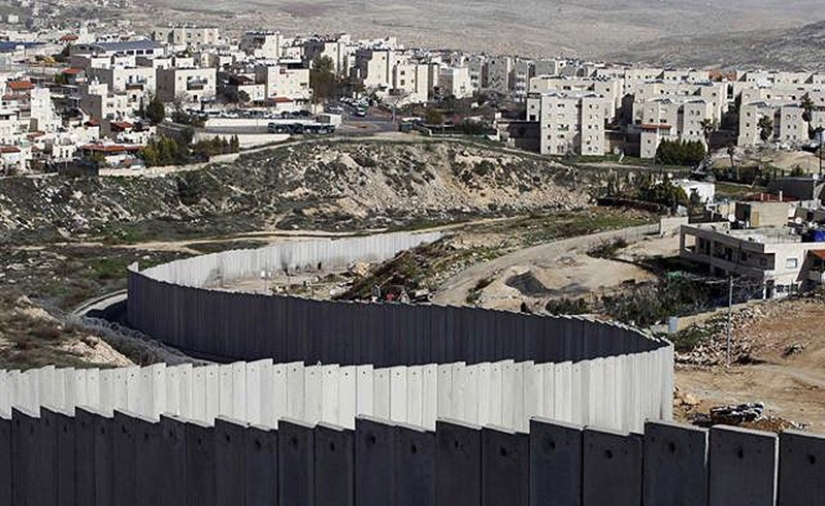
Israel does not turn a blind eye to Palestinian complaints: it has created a Higher Court specifically to sort out Palestinian claims about the barrier. In 2004, Israel believed that they deserved attention, and changed the route of the barrier around Jerusalem, guided by humanitarian considerations — the first such decision after many years. The Supreme Court also ruled that the barrier cannot be used as a political border.
It is impossible to consider all the court cases related to the barrier, but it can be noted that it is extremely burdensome for Palestinians. For free travel between regions, as well as entry and exit from the region in general, passports, visas and permits are required. Reports show that the court has made many decisions in favor of the Palestinians, including compensation, the transfer of crops and even the removal of the barrier. However, other reports show that Israel has redirected the barrier to include settlements at the expense of Palestinian territories.
Both sides hate each other, but the walls and fences will be destroyed when the conflicts are resolved. We hope that we will all live to see the day when these barriers will no longer be needed.
Recent articles

In July 1957, a close friend of Marilyn Monroe, photographer Sam Shaw, arranged a photo shoot for the actress on the beach in ...

It's no secret that hot men and cute kittens are among the top topics on the Internet. Therefore, the creators of the blog Des ...

Dangerous pimp guys and their hot chocolate girlfriends. They didn't let strangers near them, so these pictures taken in the ...